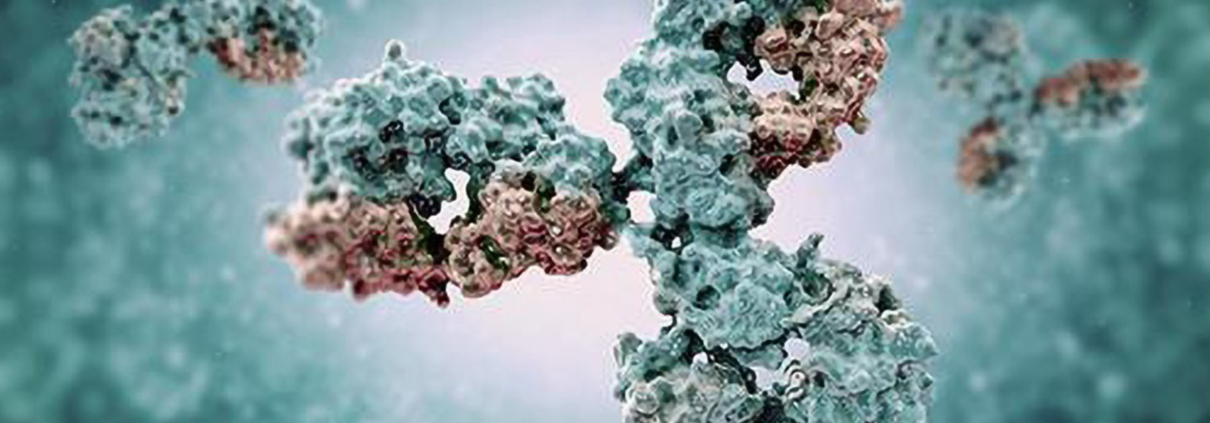Humanized Antibody JF5 detects Aspergillus
Towards translational ImmunoPET/MR imaging of invasive Pulmonary Aspergillosis: The Humanized Monoclonal Antibody JF5 detects Aspergillus Lung Infections in Vivo
Antibody Humanization service
Fusion Antibodies has the knowledge and expertise to build and deliver a tailored package of the services required to achieve outstanding results. With over >110 humanization projects successfully completed to date (from Rabbit, Rat, Mouse, Chicken, Llama), including multiple antibodies in clinical trials.
In this case study example Fusion Antibodies provided a tailored package of Antibody Humanization services to successfully humanize murine mJF5 for the University of Exeter spin-out company ISCA Diagnostics Ltd. (www.iscadiagnostics.com).
The Humanized Monoclonal Antibody JF5 detects Aspergillus Lung Infections in Vivo
Objective
Invasive pulmonary aspergillosis (IPA)is a frequently fatal lung disease of neutropenic patients caused by the ubiquitous airborne fungusAspergillus fumigatus. As a leading cause of death in haematological malignancy and hematopoietic stem cell transplant patients, the fungus accounts for the majority of the >200,000 life threatening infections annually with an associated mortality rate of 30–90%.
Diagnosis of IPA is a major challenge as clinical manifestations of the disease are nonspecific, and methods for the detection of circulating biomarkers such as β-D-glucan or galactomannan (GM) in the bloodstream lack specificity or sensitivity. For this reason, culture of the fungus from lung biopsy tissues remains the gold standard test for IPA diagnosis, but this invasive procedure lacks sensitivity, delays diagnosis, and is frequently not possible in already critically ill patients.
In a previous study (Rolle et al. [2016] Proceedings of the National Academy of Sciences of the United States of America 113 (8): E1026-E1033), ISCA Diagnostics and co-workers developed a novel non-invasive procedure for IPA diagnosis based on antibody-guided positron emission tomography and magnetic resonance imaging (ImmunoPET/MRI) using a [64Cu]DOTA-labelled mouse monoclonal antibody (mAb), mJF5. The highly specific tracer allows repeated imaging of A. fumigatus lung infections and differentiation of IPA from pulmonary inflammation and from infections caused by bacteria.
To enable translation of the tracer to a clinical setting, ISCA Diagnostics’ aim was to develop a humanised version of the antibody JF5 (hJF5), and to evaluate its performance in pre-clinical imaging of lung infection using a [64Cu]NODAGA-hJF5 tracer (Davies et al. [2017] Theranostics7 (14): 3398-3414).
Process
Fusion Antibodies developed a humanized version of JF5 (hJF5), using CDR grafting and applied its proprietary CDRx™ platform. Fusion Antibodies delivered the following package of Antibody Humanization services:
- Antibody humanization design
- Plasmid synthesis and cloning
- Transient expression
- Stable cell line development
Fusion Antibodies designed humanized variants by CDR grafting into mature human frameworks selected by homology and position of key residues identified as critical for optimal retention of CDR-loop confirmation. Humanized variants were analysed for sequence liabilities including T-cell epitopes, glycosylation and deamidation sites. Humanized heavy and light chains were transiently expressed in CHO cells to determine expression yield and to select a lead candidate. A stable pool of CHO cells was developed expressing the lead candidate.
ELISA tests investigated the immunoreactivity of the hJF5 antibody following labelling with chelators DOTAGA and NODAGA. PET/MR imaging, ex vivo bio distribution and autoradiography examined the uptake of [64Cu]NODAGA labelled hJF5 antibody in the lungs of mice infected with A. fumigatus. Results were analysed using one-way analysis of variance (ANOVA) followed by Tukey’s multiple comparison test.
Results and conclusion
The pre-clinical studies conducted using the 64Cu-labeled hJF5 antibody in a neutropenic mouse model of IPA, have demonstrated improved uptake of the hJF5-based PET tracer in infected lung tissues compared to its murine counterpart.
The results show both mJF5 and hJF5 bind to the antigenic determinant β1,5-galactofuranose (Galf) present in the target mannoprotein antigen. ELISA tests reveal unlabelled humanized hJF5 and hJF5-NODAGA antibodies exhibit increased binding with the purified mannoprotein antigen compared to murine mJF5 and mJF5-NODAGA (Figure 1). Furthermore, uptake of humanized hJF5-NODAGA in the lungs of infected mice was significantly higher compared to murine mJF5 (Figure 2). This trend in uptake was further evidenced by ex vivoautoradiography of the lungs of infected mice (Figure 3).
In summary, Fusion Antibodies successfully developed a humanized version of the Aspergillus-specific mAb JF5. The improved imaging capabilities of hJF5 provides an excellent platform for clinical studies of IPA detection using antibody-guided molecular imaging (Thornton [2018] Frontiers in Microbiology 9: 691).
The JF5 humanization project represents another successful project for Fusion Antibodies and is a case study example of the robust nature of Fusion Antibodies’ CDRxTM Humanization platform.
Figure 1. ELISA of mJF5, hJF5, human IgG1 isotype control antibody ET901, and non-radiolabelled DOTAGA- or NODAGA-conjugated antibody derivatives, using microtiter plates coated with 1 mg/mL of purified Aspergillus mannoprotein antigen. No notable reductions in binding of the mJF5 and hJF5 antibodies are apparent as a result of conjugation to the chelators DOTAGA or NODAGA. Note, however, the increase in binding of the hJF5 and NODAGA-hJF5 antibodies compared to the mJF5 and NODAGA-mJF5 counterparts at equivalent antibody protein concentrations.

Figure 2. Quantification of the PET images 48 h p.i. for lung tissues. Uptake of the various tracers in the lungs of infected animals compared to PBS controls at 48 h p.i. is shown in groups of n=4-5 mice. Significantly higher uptake of [64Cu]NODAGA-hJF5 in the lungs of A. fumigatus infected animals was obtained compared to all other tracers. Data are expressed as the mean ± SD %ID/cc. Group differences were examined using one-way ANOVA, followed by post hoc Tukey–Kramer, *P < 0.05.

Figure 3. Representative autoradiographic images with subsequent H&E staining of the lung tissue 48 h p.i. Autoradiographs of lung sections (right) with the corresponding H&E staining (left). Ex vivo autoradiography shows higher tracer accumulation in the lungs of infected animals receiving the JF5 antibody tracers compared to the respective PBS controls. Note, there is a higher uptake of [64Cu]NODAGA-hJF5 in the lungs of infected animals compared to the other infected groups.


